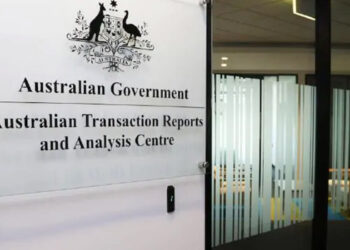There is a 40 per cent chance that the Reserve Bank of Australia (RBA) will hike rates in November, according to economists at Commonwealth Bank.
CBA head of Australian economics Gareth Aird said in a note on Thursday that the big four bank’s central scenario still foresees a hold at the November meeting. But he cited a “clear near-term risk” that the RBA will deliver on its “long-held hiking bias” and increase the cash rate by 25 basis points at either the November or December board meetings.
Mr Aird explained that CBA’s base case is mainly based on the assumption that the RBA will not hike again if it remains confident that inflation can return to the target range of 2 to 3 per cent by the end of 2025, without additional tightening.
“That confidence could be tested in the wake of the upcoming Q3 23 CPI. As such, we currently categorise the November board meeting as ‘live’,” he said.
Markets, he noted, are expected to be firmly focused on the third quarter consumer price index (CPI), scheduled for release by the Australian Bureau of Statistics (ABS) on 25 October.
Mr Aird assessed that, if the Q3 CPI casts “sufficient doubt” on whether or not inflation will return to target by the end of 2025, the RBA board is unlikely to leave the cash rate unchanged.
“The RBA will hike the cash rate in November if the board believes a rate increase is necessary to forecast a central scenario for inflation to return to the target band by late 2025,” he explained.
But, if headline inflation prints a little lower than the RBA forecast, the board will likely leave policy on hold in November, Mr Aird added.
He, however, described the decision as “finely balanced”.
CBA has predicted a quarterly lift in headline inflation of 0.9 per cent for an annual increase of 5.1 per cent. This is slightly below the RBA’s expectations for a quarterly rise of 1.0 per cent and an annual lift of 5.2 per cent.
But CBA has also put trimmed mean inflation “a touch above” the RBA’s expectation of a 1.0 per cent quarterly boost and 4.9 per cent year-on-year lift.
Mr Aird acknowledged that the risk to CBA’s Q3 inflation forecast is “to the upside” especially in light of the monthly CPI indicator, which showed that headline inflation rose by 5.2 per cent over the 12 months to August, up from 4.9 per cent in the year to July.
“I think in the past, we’ve made it pretty clear we would be not wanting to see inflation take much longer. But you’d have to add up a lot of different factors that would all move in one direction, and it’s possible if that were to happen, for the board to want to react,” Mr Kent said.
“They’ve said they may need to raise interest rates in the future to bring inflation down. I think that’s a reflection of the fact that we wouldn’t want it to be much slower.”
The RBA’s August statement on monetary policy predicted that headline inflation will decline to 2.8 per cent in the fourth quarter of 2025.
Along with the Q3 CPI, the RBA is also predicted to take into consideration labour force and retail trade data for the month of September, ahead of its November meeting.







